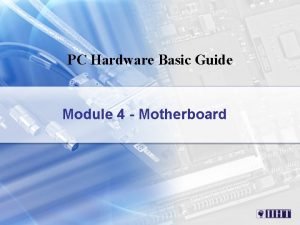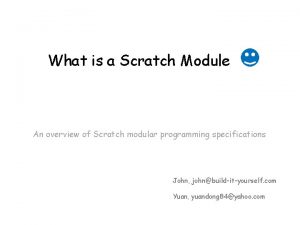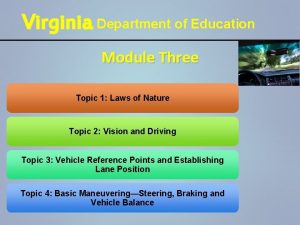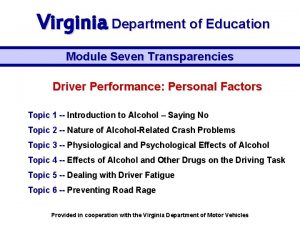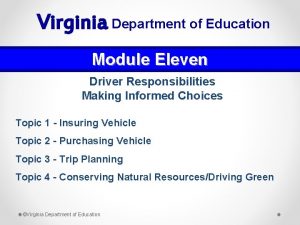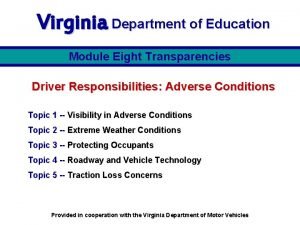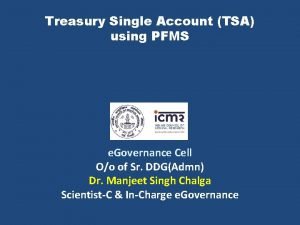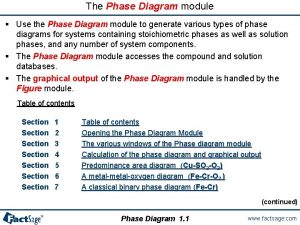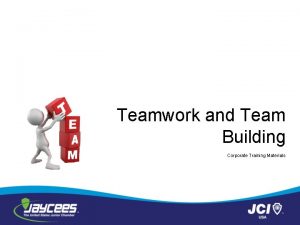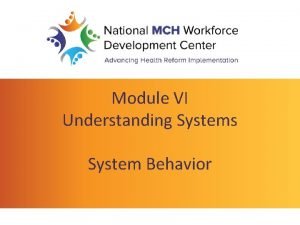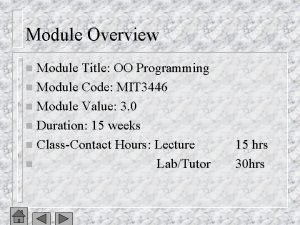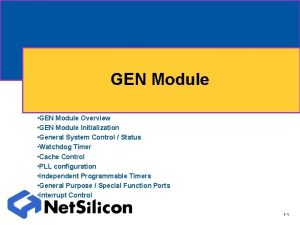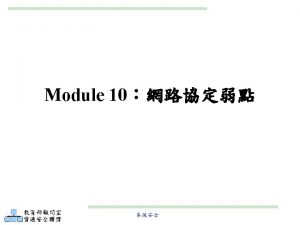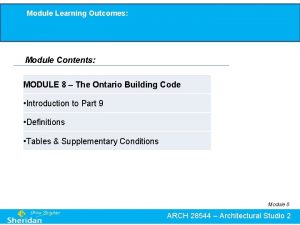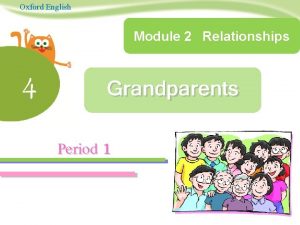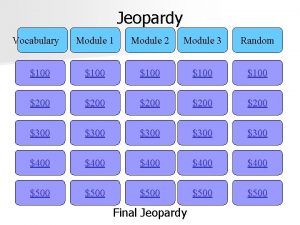Module VI Understanding Systems Understanding Systems Systems System



































- Slides: 35

Module VI Understanding Systems

Understanding Systems • Systems • System Behavior • Feedback

Learning Objectives • Systems – Clarify terms – Describe characteristics • Complexity – Clarify terms – Describe characteristics

SYSTEMS

Definition System: a collection of parts that interact with each other to form an interdependent whole

Characteristics of Systems • “Systems have specific purposes… • A system’s parts must all be present for the system to carry out its purpose optimally • A system’s parts must be arranged in a certain way for the system to carry out its purpose • Systems maintain their stability through fluctuation and adjustments • Systems have feedback” Source: Anderson and Johnson. Systems Thinking: From Concepts to Causal Loops. Pp. 3 -4.

Organizations as systems Organization a “social structure created by individuals to support the collaborative pursuit of specified goals” - Scott, 2011.

Clarify Terms Nested Systems District School Grade Class

Formal System http: //www. cdc. gov/nphpsp/essentialservices. html

One System http: //www. cdc. gov/nphpsp/essentialservices. html

Activity: Informal System? http: //www. cdc. gov/nphpsp/essentialservices. html

Example: Informal System Women and Infants

Clarify Terms Systems Thinking: “…a discipline for seeing wholes…” - Peter Senge “…an interdisciplinary field that studies the interconnected factors that shape the behavior of complex systems that occur across many domains – including nature, business, science, public health, and society. ” - Hassmiller Lich, Ginexi, Osgood, Mabry


COMPLEX SYSTEMS: DETAIL AND DYNAMIC COMPLEXITY

Detail Complexity • Systems with a large number of parts • Do not change over time • Difficult to understand as a whole 16

Dynamic Complexity Dynamic complexity leads to counterintuitive behavior of complex systems because: – Things change over time – Lag time between cause and effect – Nonlinear relationships – Feedback loops 17

Dynamic Complexity “…cause and effect are subtle, and where the effects over time of interventions are not obvious”

Dynamic Complexity Dynamic complexity leads to counterintuitive behavior of complex systems because: – Things change over time – Lag time between cause and effect – Nonlinear relationships – Feedback loops 19

Dynamic Complexity Dynamic complexity leads to counterintuitive behavior of complex systems because: – Things change over time – Lag time between cause and effect – Nonlinear relationships – Feedback loops 20

WHO Surgical Checklist

Characteristics http: //www. cdc. gov/nphpsp/essentialservices. html

Dynamic Complexity Dynamic complexity leads to counterintuitive behavior of complex systems because: – Things change over time – Lag time between cause and effect – Nonlinear relationships – Feedback loops 23

Dynamic Complexity Nonlinear relationships: “the same action has dramatically different effects in the short run and the long run. . . an action has one set of consequences locally and a very different set of consequences in another part of the system. . . and obvious interventions produce nonobvious consequences” - Diane Kelly

Tendency: Linear Thinking

Nonlinear Thinking

Dynamic Complexity Dynamic complexity leads to counterintuitive behavior of complex systems because: – Things change over time – Lag time between cause and effect – Nonlinear relationships – Feedback loops 27

Tradeoffs Better Problem A. High leverage intervention B. Low leverage intervention Worse Short term Time Long term

Tradeoffs Better High leverage intervention Problem Program B Program A Low leverage intervention Worse Short term Time Long term

Tradeoffs Better Problem Program A Program B Worse Short term Time Long term

More on “hard systems problems” Wicked problems Problem in which stakeholders do not agree on what the problem is, or even if there is a problem – threatening collective impact. - Vennix, 1999.

More on “hard systems problems” Messy problems “actually consist of multiple smaller problems that cannot be solved independently, and which often involve ‘socio-political’ or ‘moralspiritual’ issues” - Gray and Gill, 2009.

Systems • Now, step back from the details and think of a system as the important forces shaping a problem you want to address. • Many different kinds of “systems” in which we might intervene to address a problem: – The state health department (or communication within it…) – Early childhood systems – All subsystems touching CSHCN – Forces shaping how states react to federal Health Care Reform, or – Life-course determinants of women’s health (MCH x chronic x infectious disease)

Bringing science to study systems Science “an interdisciplinary field that studies the interconnected factors that shape the behavior of complex systems that occur across many domains – including nature, business, science, public health, and society. ” - Hassmiller, Ginexi, Osgood, Mabry, 2013.

Summary • Systems – Clarify terms – Describe characteristics • Complexity – Clarify terms – Describe characteristics
 C device module module 1
C device module module 1 Social influence theory of hypnosis
Social influence theory of hypnosis Module 10 topic 2 drivers ed
Module 10 topic 2 drivers ed Module 4 operating systems and file management
Module 4 operating systems and file management Sympathetic nervous system
Sympathetic nervous system Understanding experience in interactive systems
Understanding experience in interactive systems Understanding operating system
Understanding operating system Amchip
Amchip Module 4 topic 2 components of the space management system
Module 4 topic 2 components of the space management system System administration module
System administration module Understanding metric system
Understanding metric system Open closed isolated system
Open closed isolated system Circularory system
Circularory system Decision support systems and intelligent systems
Decision support systems and intelligent systems Engineering elegant systems: theory of systems engineering
Engineering elegant systems: theory of systems engineering Embedded systems vs cyber physical systems
Embedded systems vs cyber physical systems Engineering elegant systems: theory of systems engineering
Engineering elegant systems: theory of systems engineering Scratch modules
Scratch modules English module grade 9 with answers
English module grade 9 with answers Module 9 gestalt psychology
Module 9 gestalt psychology Module 3 topic 1 laws of nature
Module 3 topic 1 laws of nature Module 7 topic 3 drivers ed
Module 7 topic 3 drivers ed Module 5 topic 1 drivers ed
Module 5 topic 1 drivers ed Module 11 topic 1 insuring a vehicle
Module 11 topic 1 insuring a vehicle Curriculum guide for driver education in virginia module 8
Curriculum guide for driver education in virginia module 8 Child functioning module
Child functioning module Groupthink vs group polarization
Groupthink vs group polarization Iris module
Iris module Module 73 the biomedical therapies
Module 73 the biomedical therapies Tsa module in pfms
Tsa module in pfms Module 7 weights and measures
Module 7 weights and measures Phase 2 plumbing
Phase 2 plumbing Udise data entry module
Udise data entry module Isopleth phase diagram
Isopleth phase diagram The challenges of middle and late adolescence
The challenges of middle and late adolescence Teamwork training module
Teamwork training module








